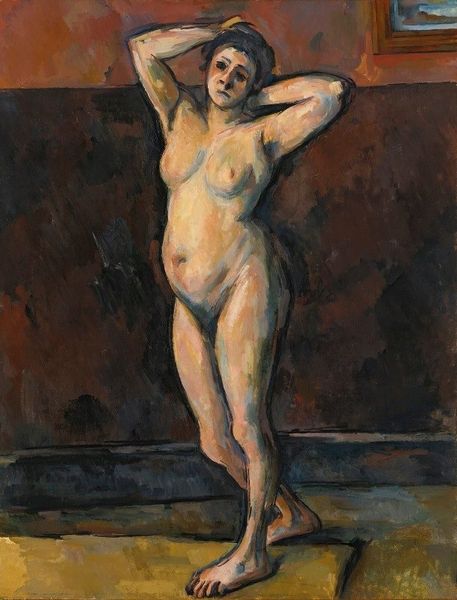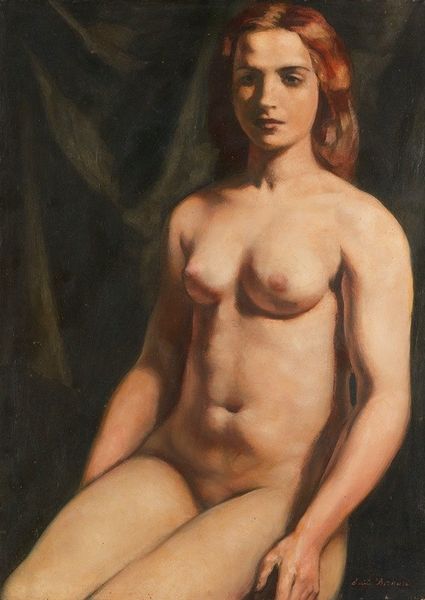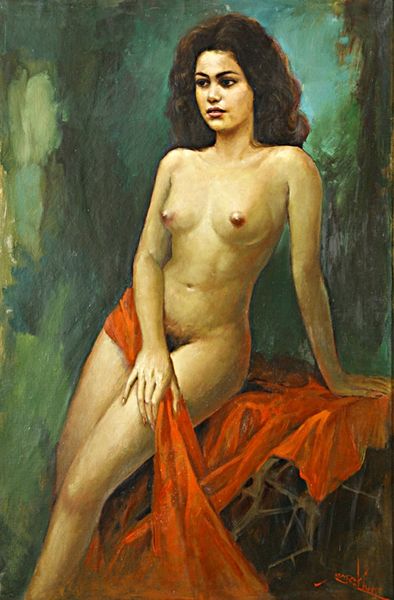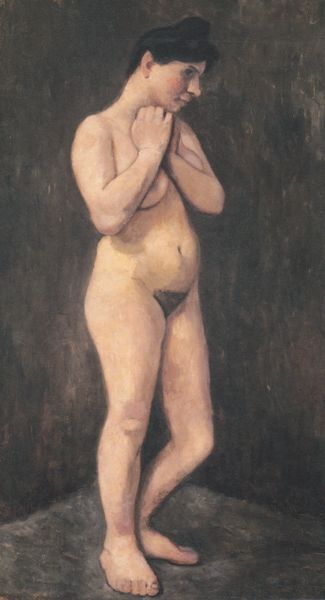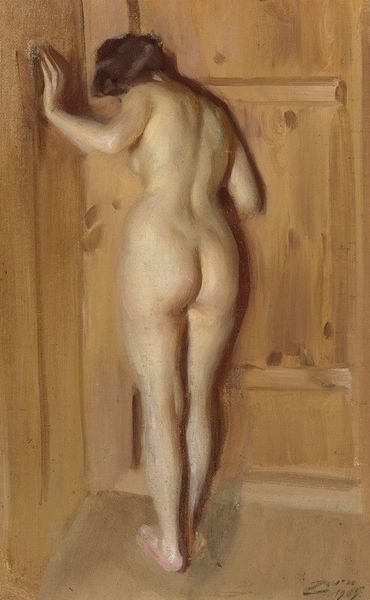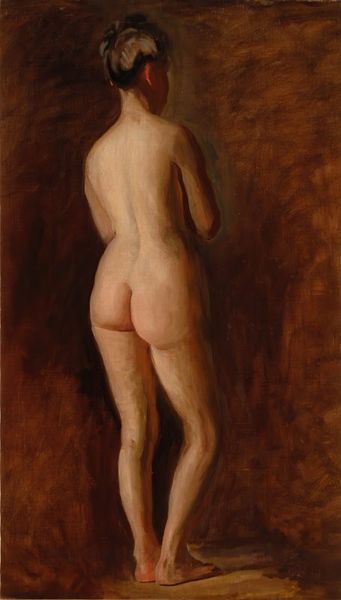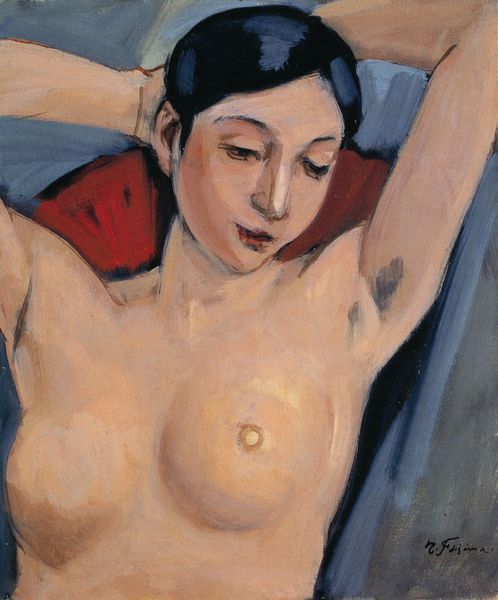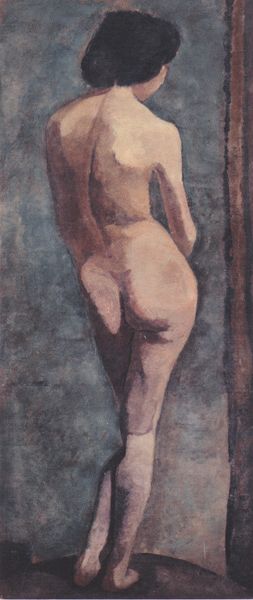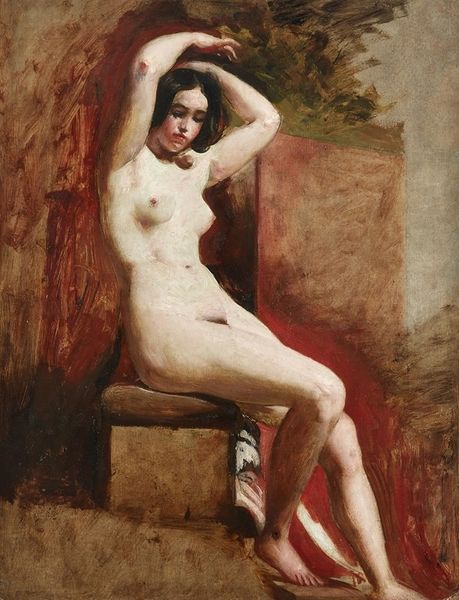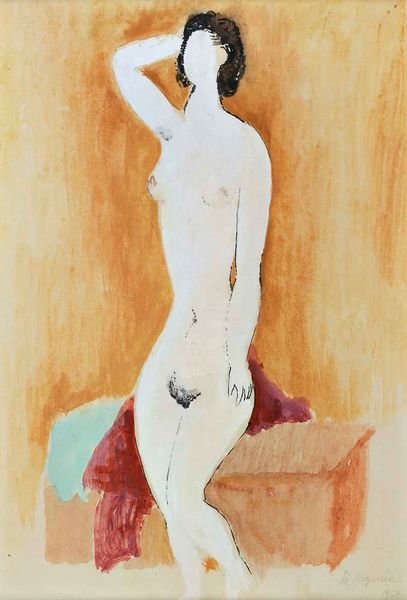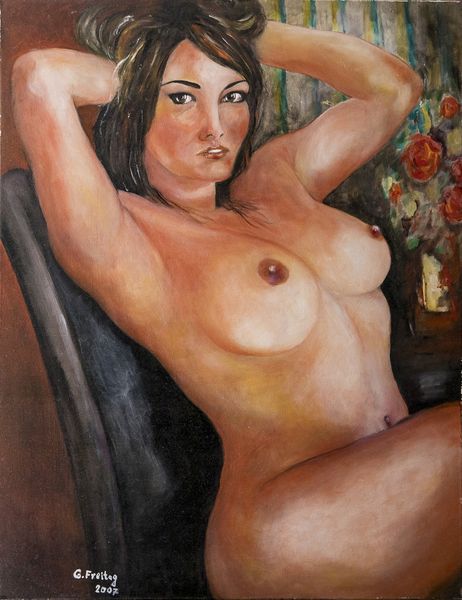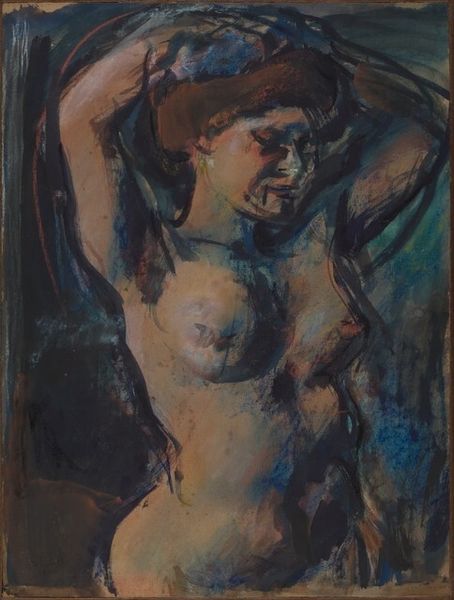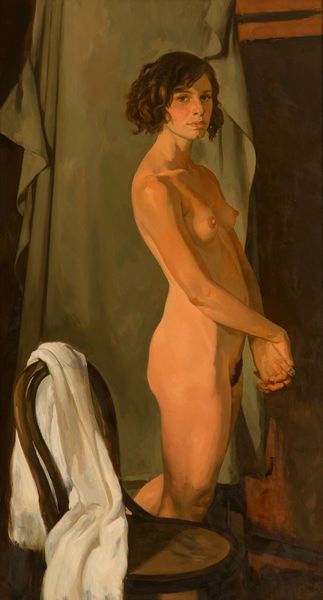
Copyright: Public domain
Curator: Welcome. Before us hangs Albert Marquet's "Nude on a Divan," created in 1912 using oil paint. It's a remarkable example of early 20th-century intimism. Editor: My immediate sense is of cool detachment, even defiance. The woman's gaze is direct, almost confrontational, and the color palette seems to emphasize that distance. Curator: Indeed, there's a sense of the subject challenging traditional power dynamics in portraiture. The nudity isn’t passive or vulnerable; her posture suggests a self-aware ownership of her body and space. It also subtly critiques the male gaze that often dominates this subject matter in art history. Editor: Absolutely. And the choker, too, feels laden with meaning, drawing our eye to the neck, often linked to control and restraint, but here worn with a diamond pendant that adds complexity, subtly combining eroticism with innocence. Consider, too, how chokers came to popularity through images of royalty, and through prostitution in post-revolutionary France. Here the associations layer across gender and power, creating both visual and thematic tensions. Curator: Considering Marquet's historical context, the painting challenges bourgeoise ideals. In a period when representations of the nude were heavily policed by conservative morals, here we have the woman herself seemingly claiming agency. The floral designs on the red partition hint at sensuality, even luxury. How does that connect for you? Editor: The stylized floral motifs on the background read like stylized fertility symbols that enhance the themes of feminine power in a society just discovering the beauty of difference through figures like Diaghilev's ballet stars. In essence, these visual cues offer a dialogue about women's shifting social roles within rapidly evolving culture. Curator: This exploration of identity intersects with a subtle but potent sense of political charge within this seemingly private, intimate portrayal. It encourages us to ask questions about gender, spectatorship, and autonomy during a period marked by both advancements and setbacks for women. Editor: Yes. Seeing it this way allows the painting to still speak vibrantly today. The combination of an impressionist approach and neo-expressionist attitude renders something very intriguing! I come away now viewing the work as less an image of repose, and more as a visual challenge. Curator: A perfect example of how a moment in time still ignites urgent questions today! Thank you for exploring with me.
Comments
No comments
Be the first to comment and join the conversation on the ultimate creative platform.
